Overcoming Challenges in Food Safety Analysis

From Bench to Bedside, The Biomedical Techniques Tackling Global Health Threats

Cannabis: Trends in Analytical Research

Next Generation Analytical Tools to Boost Energy Efficiency

The Race for Better Biotherapeutics: Why a Comprehensive Analysis is Key
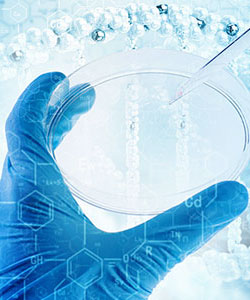
Small Molecules, Big Challenges: Adopting New Methods for Stability Testing

Utilization of Bioanalytical Techniques in the Crime Scene

Current and Future Applications of Bioanalytical Imaging

Analysis and Automation Technologies for Pharmaceutical Research

Environmental Analysis at Pittcon 2018
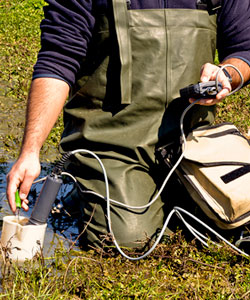
Food Safety at Pittcon 2018

Rise of the “Omics”: Analyzing Biological Molecules

The Latest Advances in Nanotechnology at Pittcon 2018

Identifying Explosive Materials and Analyzing Post-Explosion Residues – The Rise in Handheld Devices

Miniature Mass Spectrometry Instruments for Biomedical Applications

Advances in Genomic Analysis Technologies: An Industry Guide
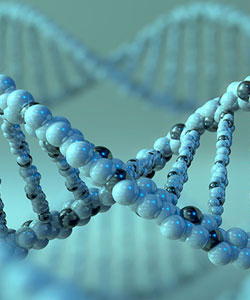
Cannabis Testing: An Industry Guide

Latest Advances in Food Safety: an Industry Guide
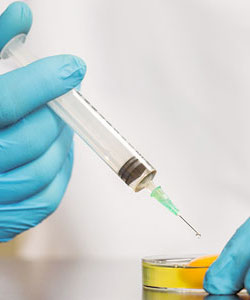
Pittcon Tracks
Biological molecules and xenobiotics (drugs, toxins) and their metabolites; study of biological systems; biosensors; forensic science and toxicology
Identification, quantitative measurement, extraction, and quality assurance of cannabis-based and psychedelic products
Environmental detection and monitoring; energy production and storage; sustainability, climate, and green chemistry; food science/safety and agriculture
Instrumentation, detection, and sensors; laboratory information systems, data analysis, and artificial intelligence; characterization and processing of nanomaterials; art and archeology
Evaluating chemical composition and properties/activities of medicinal drugs and biologics; high-throughput screening and process control; drug discovery and design; personal care and consumer products
Leadership and power/soft skills; career navigation, DEI (diversity, equity and inclusion), communication, and entrepreneurship; education and teaching and more
2019 Series

An interview with Professor Stoddart, 2016 Nobel Laureate in Chemistry, conducted by Alina Shrourou, BSc.

An interview with Dr. Fenella G. France, to introduce the ideas behind the Plenary Lecture to be given at Pittcon 2019, conducted by Alina Shrourou, BSc.

In this interview, Dr Kelly Zhang outlines recent advances in multidimensional liquid chromatography (MDLC) for pharmaceutical analysis, to be discussed in her presentation at Pittcon 2019. Interview conducted by Alina Shrourou, BSc.

An interview with Dr Wei Min, describing his work involving the development of new chemical imaging techniques for studying small molecules, which led to him being awarded the 2019 Pittcon Achievement Award, conducted by Alina Shrourou, BSc.

In this interview, Dr. Michelle Peace, an Associate Professor at VCU, provides an overview of her research into the use of e-cigarettes for the inhalation of illicit drugs and the dangers that this poses to health and society as a whole, conducted by Alina Shrourou, BSc.

An interview with Dr. Ester Segal from the Technion (Israel Institute of Technology), discussing the development of a 2D silicon microarray that supports the growth of bacteria and fungi for rapid antimicrobial susceptibility testing (AST) in the community. Dr. Segal will present her work at Pittcon 2019. Interview conducted by Alina Shrourou.

An interview with Zonetta English, discussing the technologies available for utilizing wastewater as renewable energy, to be explored at Pittcon 2019, conducted by Alina Shrourou, BSc.

An interview with Dr. Michael Dong, about his upcoming talk at Pittcon 2019, conducted by Alina Shrourou, BSc.

An interview with Philip Preston, outlining the importance of temperature control in any experiment, and the solutions Polyscience will be presenting at Pittcon 2019, conducted by Alina Shrourou, BSc.
2018 Series

An interview with Dr John Richie, Professor of Public Health Sciences & Pharmacology, Penn State College of Medicine, conducted by Stuart Milne, BA.

Characterizing the brain, cell by cell; an interview with Professor Jonathan Sweedler, University of Illinois at Urbana-Champaign

An interview with Professor Jack Gilbert, Director of the Microbione Center, University of Chicago, conducted by Alina Shrourou, BSc.

An interview with Dr Cesar M. Castro, Director of the Cancer Program, MGH Center for Systems Biology & Assistant Professor of Medicine, Harvard Medical School, conducted by Alina Shrourou, BSc

Cannabis Quality and Contamination Testing: an interview with Bob Clifford, PhD, conducted by Alina Shrourou, BSc

Prof. Antje J. Baeumner, University Regensburg, Institute for Analytical Chemistry, talks to AZoNano about her research into novel Nanomaterials for improved food safety.

It has been announced that you will be doing a talk as part of the “Structural Mass Spectrometry and Top Down Proteomics of Proteoforms and Their Complexes” symposia at Pittcon 2018. Please can you outline the project you are working on and will be discussing during your talk?

It has been announced that you will be presenting in the “Analytical Methods in Forensic Biology and DNA Analysis” symposium at Pittcon 2018. Why are bioanalytical methods important for forensics?

Illumina was founded in 1998. It was based on technology invented by Dr. David Walt that was licensed from Tufts University and formed the basis of our microarray business. The fundamental invention was a unique way to put beads in wells that were created on fiber optic bundles, with the beads being imaged through the fibers.

Optogenetics is a way of introducing information into the brain using light, it targets specific cells or connections across the brain. It is fast, like brain signaling, and helps you communicate with neural circuitry in a language more similar to what is normally used within the brain.

Solid Phase Micro Extraction: Dr. Pawliszyn, University of Waterloo, talks to AZoM about the Solid Phase Micro Extraction and his upcoming talk at Pittcon 2017.

Using spherical nucleic acids to track and treat disease; An interview with Dr. Chad Mirkin, Northwestern University, conducted by April Cashin-Garbutt, MA (Cantab)

Diagnosing infections through molecules in patient breath; an interview with Dr. Jane Hill, Dartmouth College, conducted by April Cashin-Garbutt, MA (Cantab)

Decoding the exposome through breath biomarkers; an interview with Prof. Joachim D. Pleil, US Environmental Protection Agency, conducted by April Cashin-Garbutt, MA (Cantab)

Single molecule detection of proteins and an introduction to the single molecule array; an interview with Professor David Walt, Tufts University.
2017 Series







Analytical Highlight: Recent Advances in UHPLC
Liquid chromatography is a well-established separation technique used across a broad range of applications to characterise the various components of a mixture. It may be used, for example, in research to study biological responses, in medicine to identify potential biomarkers of disease or treatment response, in environmental analysis to monitor for the presence of pollutants, or in pharmaceutical development and production to identify active drug components or screen for impurities.
(READ MORE)

Market Highlight: The Outsourcing of Pharmaceuticals
Patent expirations, growth of disease prevalence, and the greater availability of advanced diagnostic procedures have increased the discovery and development of new biopharmaceutical compounds at an exponential rate. Pharmaceutical outsourcing has become a massive industry and represents a key driver behind many of the drugs brought to market today.
(READ MORE)

Using Mass Spectrometry to Analyze the Aging Population
The complex physiological process of aging represents many problems among rapidly aging populations. One well recognized consequence of aging is degradation of immune function, which is referred to as immunosenescence. (READ MORE)

Identifying Explosive Materials and Analyzing Post-Explosion Residues
The prevention of accidental and intentional explosions is an increasingly prominent global issue that depends on the detection of explosive materials and analysis of post-explosion residues. However, detection of explosive materials can be dangerous due to the imminent threat of explosion, and the potential presence of toxic materials. Therefore, techniques for detecting explosive materials must be fast, efficient and able to operate from a safe distance. (READ MORE)
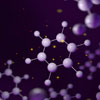
Analyzing Volatile Organic Compounds (VOCs) In the Environment
The analysis of volatile organic compounds (VOCs) is one of the most important topics under discussion at Pittcon 2017 in Chicago. The accurate measurement of VOCs enters numerous scientific arenas from the detection of VOCs as biological markers for cancer cells (health monitoring chemical fingerprint) [1] to monitoring the environment for levels of VOCs deemed harmful to human health [2, 3, 4]. (READ MORE)

Studying Alzheimer’s at Single Cell Resolution
Cells vary considerably within cell populations, including within a particular type of tissue or cell. No two cells have the same response to their surroundings, since each cell’s behavior is dictated by the particular genes it expresses and at what level. This unique gene expression is what controls how the cell performs in the body. (READ MORE)

Combined Imaging and Theranostic Nanoparticles for Neurological Diseases
Neurological diseases are some of the most challenging areas for drug discovery and development. There is significant unmet need in the marketplace, with an associated high degree of disability, lost productivity, and loss of quality of life. (READ MORE)

Cannabis Testing in the Legalization Era
Attitudes towards cannabis have shifted dramatically over the last two decades, and this has been reflected in recent changes to the law in many countries around the world. Just this November, an additional four US states voted to make recreational cannabis use legal, bringing the total to eight, (plus Washington DC). And over half of US states have legalized medicinal cannabis use. (READ MORE)

Technology Brings a New Age in Food Safety and Analysis
Protecting consumers has long been a priority for the food industry, but modern times have changed the specific challenges producers and regulators face when it comes to food safety. Increasing globalization presents new opportunities for food fraud with the potential for billion-dollar payoffs. (READ MORE)

Nanotechnology Advances for Cancer Diagnostics and Nanotherapy
The delivery of drugs and diagnostic markers to cancer tissues has been a major challenge in the development of cancer therapies. Typical delivery methods distribute products throughout the body, affecting healthy and cancerous cells, thereby toxic effects to healthy cells limit the scope and effectiveness of the anticancer therapy. (READ MORE)

X-ray Diffraction Techniques: Ab Initio Structure Determination Via Powder X-Ray Diffraction
X-ray diffraction is a powerful tool for determining the structure of crystalline materials – this is most often used for identification of unknown samples, such as in geology and earth sciences, or for studying protein structures in life sciences. It can also be used to determine the unit cell dimensions of a known crystal, or to measure the purity of a sample. (READ MORE)

Stabilizing lipid bilayer membranes
Ion channels are essential to key cellular processes including signal transduction, osmoregulation and maintenance of the membrane potential. They are therefore the targets of many clinically used drugs. (READ MORE)

Chromatography and Mass Spectrometry for Environmental Analysis
A wide variety of contaminants with the potential to cause harm to humans and animals can make their way into the environment. They can be found in the air, water and soil and may come from sources such as industrial waste, landfill sites, pesticides and pharmaceutical drugs. (READ MORE)

Proteomics: top-down or bottom-up?
Proteomics is playing an increasingly important role in the discovery of disease biomarkers and the identification of new therapeutic targets. Proteomics involves the separation, identification, and quantification of proteins. It also includes the characterization and analysis of proteoforms that arise as a result of post-translational modifications (PTMs) and sequence variants such as mutants and alternatively spliced isoforms. (READ MORE)

Detecting Weak Raman Signals with Surface-Enhanced Raman Spectroscopy
Raman spectroscopy is a type of vibrational spectroscopy like the more widely used infrared spectroscopy. It measures the way light is scattered by a material. In most cases the wavelength of the scattered light is identical to the incident light and is known as Rayleigh scattering. (READ MORE)

Using Nonlinear Spectroscopic Techniques to Investigate Nanoparticles
Spectroscopic methods exploit the interactions between matter and electromagnetic radiation in order to probe molecular fine structure. The way samples interact with radiation reveals a lot of information about its nature; making spectroscopy a useful tool for both qualitative and quantitative analysis. (READ MORE)
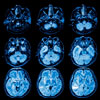
Stimulated Raman Scattering (SRS) microscopy and cancer detection
The need for accurate cancer detection: The ability to distinguish cancer cells from healthy cells during surgery is essential for preventing the removal of healthy tissue and ensuring no tumor remnants are left behind. (READ MORE)

Understanding Alzheimer’s Disease through genomics and proteomics
Alzheimer’s disease is a progressive neurodegenerative condition that causes dementia. In this disease, dementia symptoms such as memory loss and difficulties with language, problem-solving and reasoning gradually worsen until they eventually start to interfere with everyday life and basic tasks such as eating and drinking. (READ MORE)

Using Mass Spectrometry to Detect Food Allergens
Food allergies are a major public health concern and are increasing worldwide. Globally, it is thought that between 220 and 250 million people suffer from a food allergy. Ninety percent of cases involve sensitivity to one of the ‘Big Eight’ allergens: egg, fish, milk, peanut, shellfish, soy, tree nuts, or wheat. (READ MORE)

Advances in Contaminant Testing of Dietary Supplements
Many consumers like to buy products marked as herbal or “natural”, often regarding these to be better for them, or even harmless. But, in reality, many such products are laced with unlabeled substances, which often includes pharmaceuticals that have long since lost their regulatory approval. (READ MORE)













